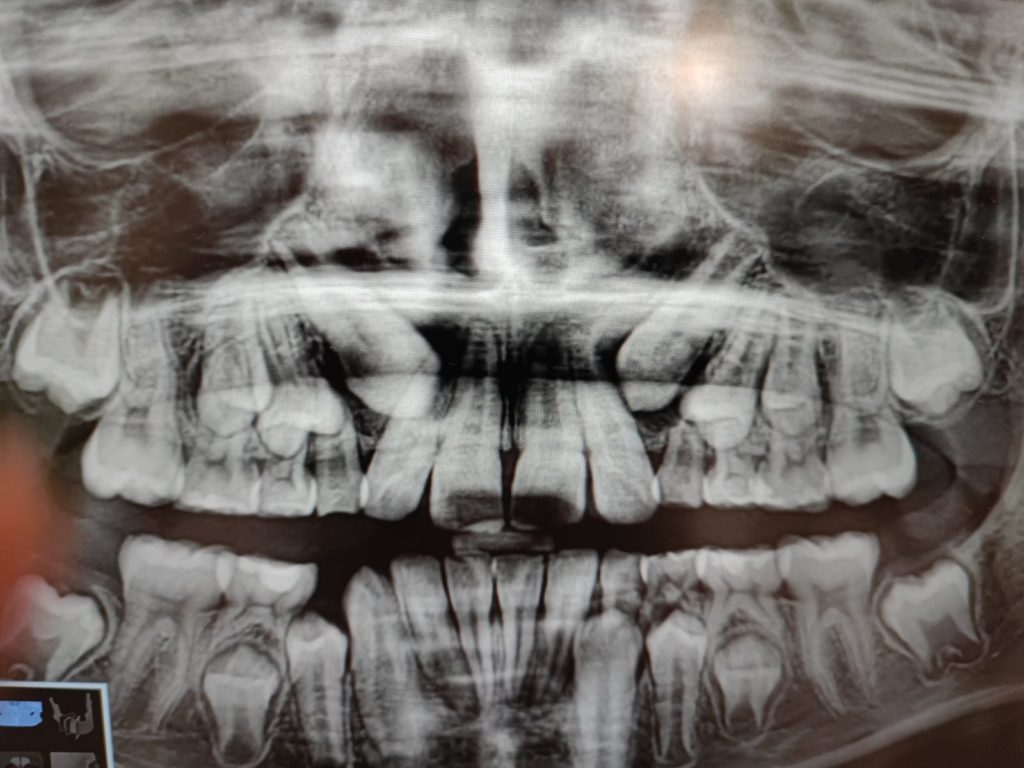If the mouths of children are characterized by something, it is by how they move!
X-rays of a 6-year-old child, the first time you see them, are a little scary, because you can see the milk teeth l and all the definitive ones hidden underneath. And it is important to do them early to check that the final teeth are coming out where it touches.
We often find that this is not the case and that there are teeth that lose their way, are blocked or even not there are or there are extra teeth.
If we do nothing, the result could be that the definitive tooth is lost in the palate or jaw, never leaves or even injures the tooth on the side causing a loss of tooth.
To avoid this, we like to do an X-ray at the first visit and if it is necessary to carry out a periodic check of a specific tooth.
The most common dental movements seen on X-rays
In this article, we will review the types of movements that we usually see on x-rays and that, thanks to them, allow us to make movements with enough time to avoid further damage. Let’s talk about the most common cases, which are:
- Fangs included,which come out “through”
- Transpositions, teeth that have exchanged their position.
- Supernumerary or teeth “over”
- Early exfoliation: Permanent teeth that make teeth that do not touch fall
- Cysts involved in bone
- Anesthesia or lack of teeth
Fangs included, coming out “through”
In this X-ray there is a tusk that is inserted horizontally in the jaw.
In this other, we see that the fangs also appear horizontally in the maxilla.
Transpositions
And in the latter, the tusk has gone backwards and is positioned between the two premolars. In this case we are talking about “transpositions”.
Supernumerary or teeth “over”
An extra shovel appears on this x-ray, which must be removed. When there are extra teeth in a mouth, we are talking about “supernumeraries”.
Early exfoliation: Permanent teeth that push teeth that do not touch
Each milk tooth is “pushed” by its final corresponding tooth. In this head, we find that several permanent teeth are “reabsorbing” teeth that do not touch and will also have to be corrected.
Cysts involved in bone
In this case we find a benign cyst that has affected the jaw bone and it will be the maxillofacial who will intervene to find the relevant solution.
Anesthesia or lack of teeth
In this patient we find that the two lateral incisors are missing and will never come out. It must be said that all these situations are quite common.
In this other case, we see that this milk tooth will never have a definitive one, a fact called agenesis. And besides, it has an included tusk that comes through.
Conclusion: it is always a good time to do X-rays but between 6 and 8 years old it is key
As we mentioned in this article, “What at 3 years is solved with 3 months, at 13 years is solved with 3 years”, around 9 years old fangs usually come out and it is not uncommon to find mouths with teeth very well placed in which, suddenly, a fang comes out of place.
The most recommended, therefore, is to constantly monitor the mouth of the little ones and not suffer for not having done an X-ray.
We hope this article has been very useful to you and any questions you already know that we are at your disposal.








